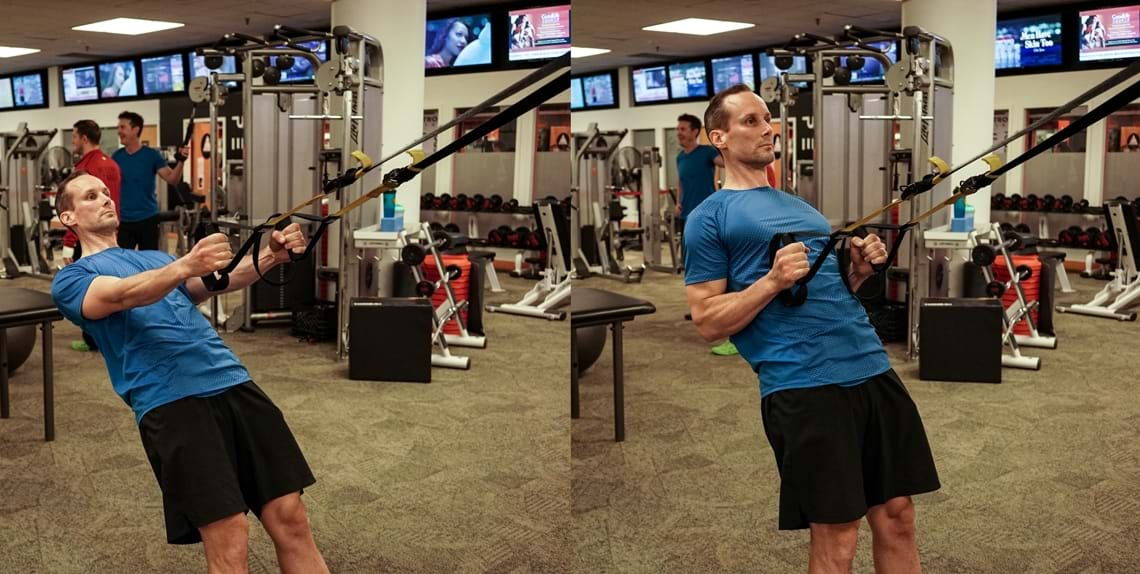The row is like a reverse bench press that utilizes the upper body to pull the load rather than push it. Known as one of the best exercises to improve shoulder health, the row helps combat bad posture by setting the shoulder back into a neutral position.
With many variations to choose from, this training staple helps develop muscle mass and back strength. You can modify the row to target different areas of the back or account for previous injuries that may limit your range of motion.
Here are the most common and effective versions of the row that can be incorporated into any strength training routine.
Bent over row (3 sets of 10 to 12 reps)
This exercise can be done with a barbell, dumbbells or kettlebells. Before you begin, pick a weight that is manageable yet challenging.
Start with your feet hip-distance apart. Grip the bar with your hands slightly wider than your hips. Slightly hinge the hips forward, keeping your back straight and your head and neck in a neutral position. Initiate the row by bringing the elbows back and activating the rhomboids to move the barbell towards your body. At the top of the movement, squeeze the upper back before slowly lowering the weight back down to the starting position.
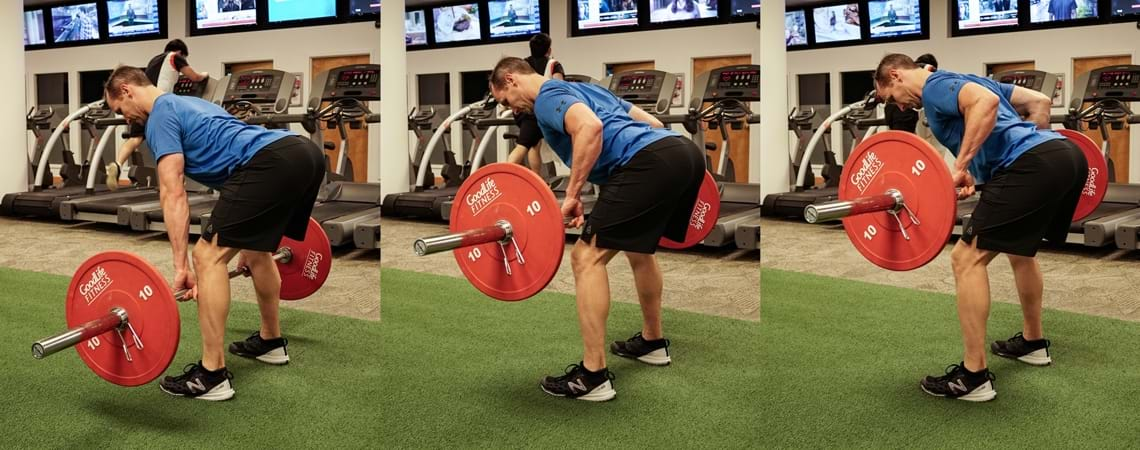
One-arm dumbbell row (3 sets of 8 to 10 reps on each arm)
This can be done with dumbbells or kettlebells.
Start by placing one knee on a flat bench and the opposite foot on the floor. Place your inside hand on the bench for stability and grip a dumbbell with your free hand. Keeping your chest facing the floor and your neck in a neutral position, bend your elbow slowly and bring the dumbbell up to your waist. Pause briefly for a moment before squeezing your shoulder blades together and slowly lowering the dumbbell back down to starting position. Complete all reps before switching to the other arm.
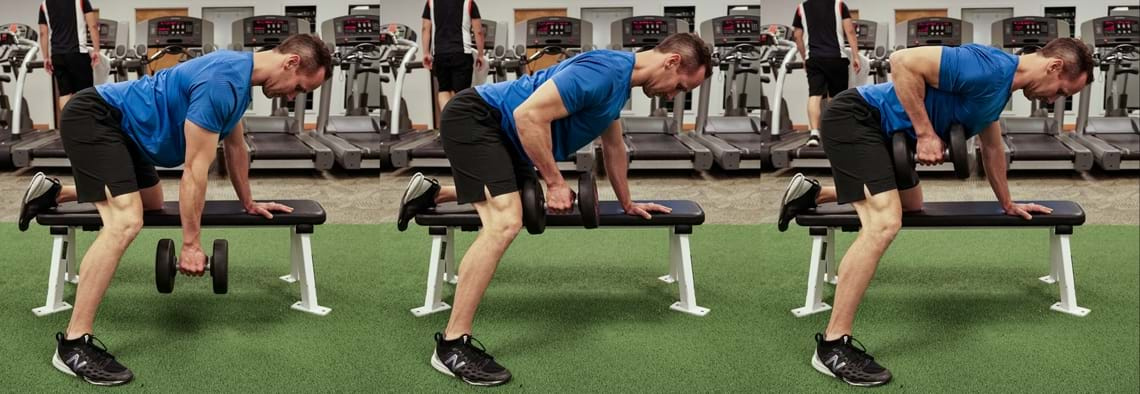
T-bar row (3 sets of 10 reps)
If your gym doesn’t have a landmine, place the end of an empty barbell in the corner of a room. Rest some heavy plates or dumbbells on the corner end of the bar to hold it down before loading the opposite side of the barbell.
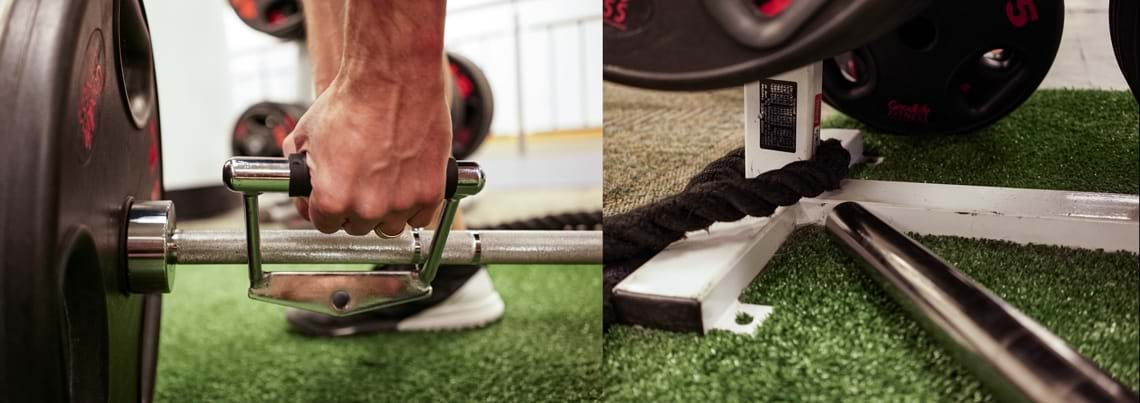
Straddle the barbell with the bar between both legs and your chest facing the loaded end of the barbell. Extend your arms and hinge over at the hips until your chest is at a 45-degree angle to the floor. Hook a v-handle grip under the bar and hold the bar with both hands. Squeeze your shoulder blades together and pull-up on the bar until the plates touch your chest. Pause at the top of this position for a moment before slowly lowering the bar back down to the ground. Repeat for nine more reps.
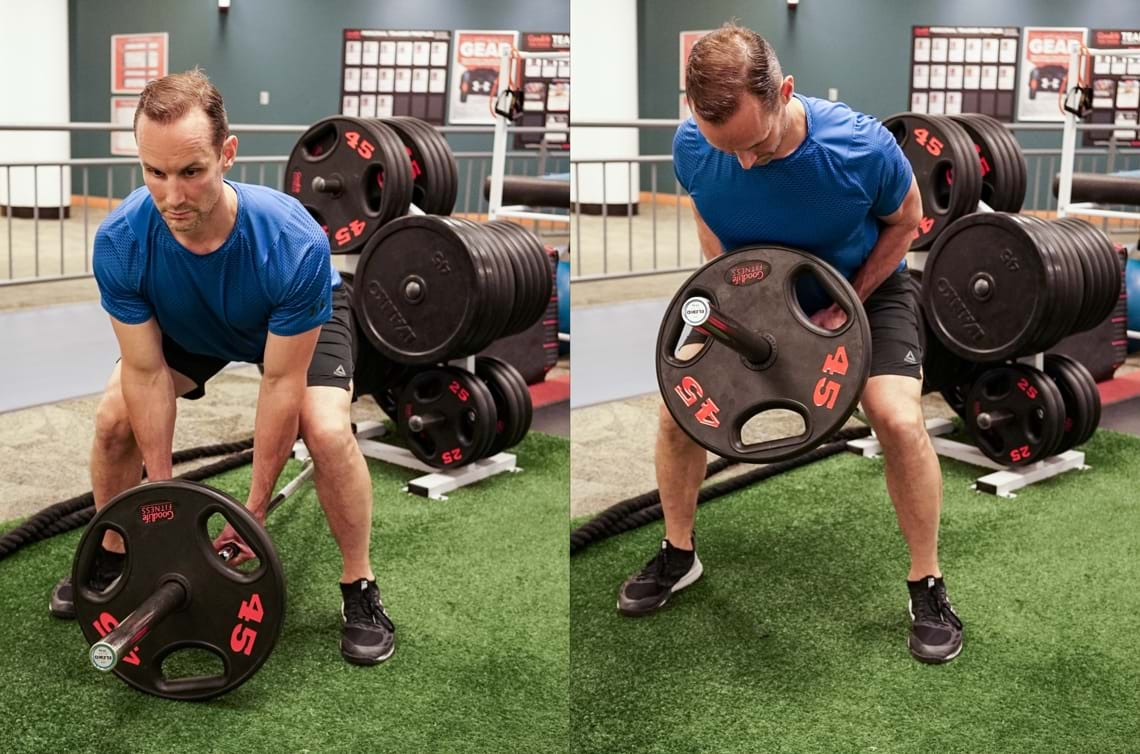
Gorilla row (3 sets of 10 reps on each arm)
This exercise can be performed with either dumbbells or kettlebells.
Start with your feet shoulder-width apart and two kettlebells in-between each foot. Hinge at your hips until you can grab the kettlebells by the handles, which should put you in a deadlift position. While keeping your back straight and engaged, row one of the kettlebells up to your hips, slightly rotating your torso to help protect your back. As you lift one kettlebell off the ground, be sure to keep a tight grip on the kettlebell that’s still on the ground. You can alternate between sides, or you can complete all of your reps on one side before alternating to the other.
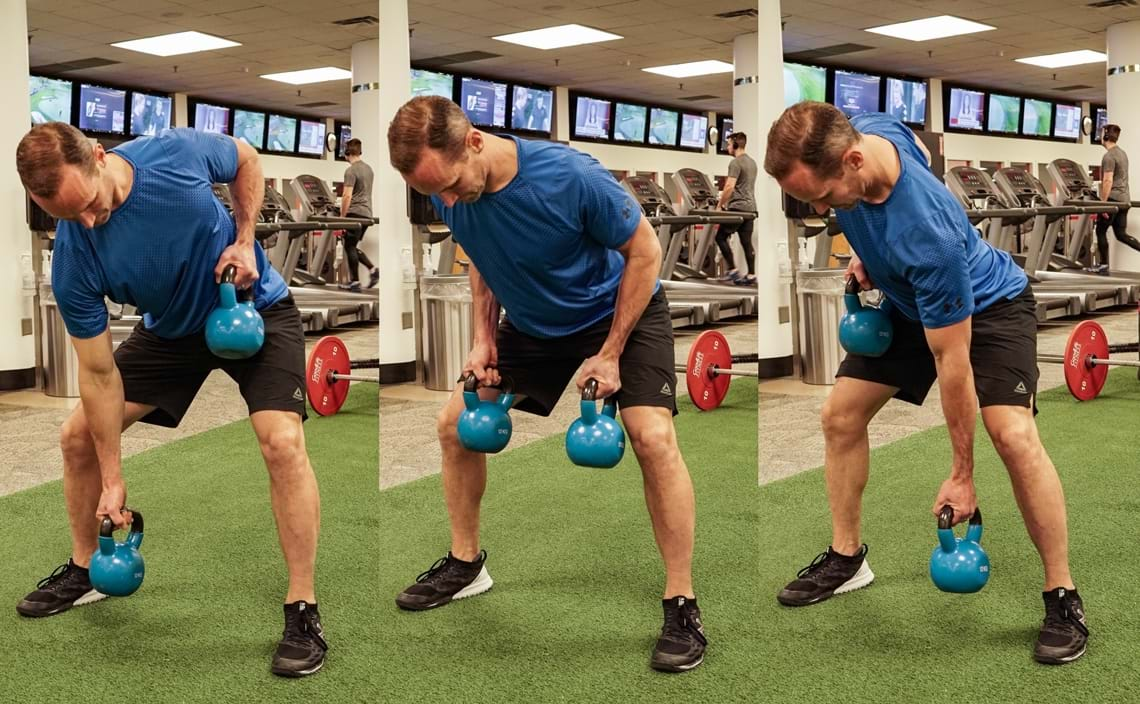
Inverted row (3 sets of 10 to 15 reps)
This exercise can be done with a barbell, bar or TRX band.
Start by positioning a bar on a rack that’s about waist height. Grip the bar a little wider than your shoulders and position yourself so that you’re hanging underneath the bar. Start with your body straight, heels on the ground and your arms fully extended. Begin by flexing your elbow and bringing your chest towards the bar. Pause at the top of the motion before slowly lowering yourself back down to the starting position.
